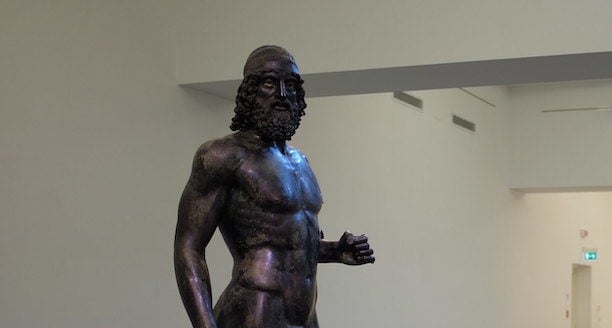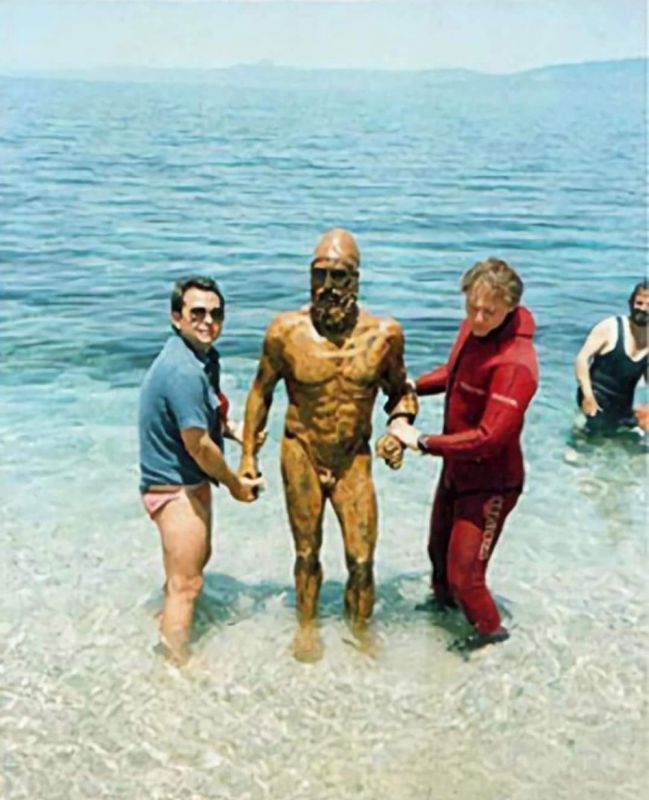
The mystery over the Riace Bronzes, two magnificent ancient Greek statues, remains, more than half a century after the day they were recovered off the coast of the Italian region of Calabria in August of 1972.
To this day, archaeologists and other scientists have been unable to identify with certainty who the bronze statues depict, when they were created—and how on earth they ended up in Calabria.

Discovered by Stefano Mariottini in the town of Riace, the two statues were transported to the National Museum of Reggio Calabria, where they underwent an initial restoration that eliminated the layers of concretized sand coating them.
Then, subsequent restorations followed in Florence and Reggio.
Mystery of ancient Greek statues continues
However, it still has not been established with absolute certainty if the pair of statues was, from the beginning, a single group or if their juxtaposition had occurred during transport over the sea.
Their exact identification is also quite uncertain and debated: do they depict athletes, or heroes, such as Agamemnon and Ajax, Mirone and Alcamene, Achilles and Patroclus, Tydeus and Amphiaraus, or deities?
Scientists are quite certain that the statues were created either in Attica or Argolis in the Peloponnese.
They have almost the same height, around two meters and are both nudes—an emblem of divine or heroic status—and their stance is the same (the right leg is straight, the left is bent).
Originally, they were accompanied by arms, as well, including helmets, coats of arms (supported by the bent left arm), and a lance (held by the lowered right hand).
Anatomical details of the Riace Bronzes
The anatomical details of the ancient Greek statues are represented with extreme precision, and the veins and arteries are visible. Their powerful musculature radiates both strength and the perfection of the human form.
The lips, eyelashes, and nipples of the statues are made of copper while the teeth are made of silver paper. Both were produced using the “lost wax” casting technique.
The statue called “Bronze A” has hair that is bound by a band and a thick and abundant beard with locks that were individually modeled.
“Bronze B” has a smoother head, sloping upward to better accommodate the Corinthian helmet, which is raised above his head to reveal the face.
While dating for the Riace Bronzes is controversial, they certainly represent two masterpieces of the art of bronze statuary from the fifth century BC.
Discovering ancient Greek bronze statues is quite a rare occurrence. While countless bronzes were created in antiquity, most no longer survive.
Throughout the centuries, bronze sculptures were melted down to create coins and other objects out of the precious material. Most bronzes that have been recovered only survived as they were somehow hidden in ancient times—often due to shipwrecks.
See all the latest news from Greece and the world at Greekreporter.com. Contact our newsroom to report an update or send your story, photos and videos. Follow GR on Google News and subscribe here to our daily email!



